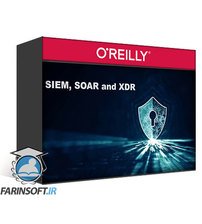40 - Chapter Introduction
41 - Chocolate Cake Recipe PKI Example 1
42 - The digital treasure PKI Example 2
43 - Browser to Webserver E2E Encryption
44 - PKI
45 - Encryption What will we learn
46 - Encryption Levels
47 - Transport Encryption
48 - Symmetric Encryption
49 - Asymmetric Encryption
50 - Key exchange Part 1
51 - Key Exchange Algorithms Part 2
52 - Encryption Key Lengths
53 - Encryption and PKI Tools Introduction
54 - TPM
55 - HSM
56 - KMS
57 - Secure Enclaves
58 - Obfuscation
59 - Steganography
60 - Tokenization
61 - Data Masking
62 - Data Masking Types
63 - Masking Techniques
64 - Hashing Introduction What are Hash Functions
65 - Real word usage of Hash Functions
66 - Journey of Hashing Algorithm
67 - Strengths Weaknesses of Hashing Algorithms
68 - Using Right Hashing Algorithms
69 - Hashing Vulnerabilities and Historical Exploits
70 - Salting
71 - Salting Under the hood
72 - Definition and basic concept History of digital signatures
73 - The importance of digital signatures in modern communication
74 - The cryptographic principles behind digital signatures
75 - The process of creating and verifying a digital signature
76 - How digital signatures ensure the integrity and nonrepudiation of data
77 - Common algorithms used for digital signatures
78 - Digital signature standards
79 - Advanced cryptographic concepts related to digital signatures
80 - Key stretching
81 - Contributors in the field of Key stretching
82 - Blockchain Introduction
83 - Blockchain as a decentralized digital ledger
84 - Adoption of block chain
85 - The Dawn of Internet Security and the Rise of Digital Certificates
86 - A brief history of cryptographic methods
87 - The introduction of SSL by Netscape
88 - How SSL became the standard for securing internet communications
89 - Why SSL evolved into TLS
90 - Poodle Attack
91 - Key improvements and differences between SSL and TLS protocols
92 - Versions of TLS and their Enhancements
93 - Certificate Authorities and their history
94 - Understanding Types of CAs Public vs Private
95 - Hierarchical Trust Model Example
96 - Hierarchical Trust Model Overview and Best Practices
97 - What is a Root CA
98 - The Need for Intermediate Certificate Authorities
99 - What are CRLs
100 - The need for OCSPs
101 - How does the browser identify the OCSP Server
102 - What are Self Signed Certificates
103 - What are Third party Certificates
104 - What is a CSR What are its Key Components
105 - Wild Card Certificates
106 - Buying a domain Lab
106 - Heres-a-step-by-step-guide-to-encrypting-your-web-application-on-a-Linux-based-system.pdf
107 - Building a Linux VM
108 - Mapping A record in DNS
109 - Configuring the webserver with LetsEncrypt certificate
110 - Verifying the LetsEncrypt Certificate chain of Trust
111 - Certbot Supporting and helpful commands
112 - Its LAB Time What next Step by Step Verifying SELF SIGNED KEYS
112 - Self-Signed-Certificate-Step-by-Step-Lab.pdf











